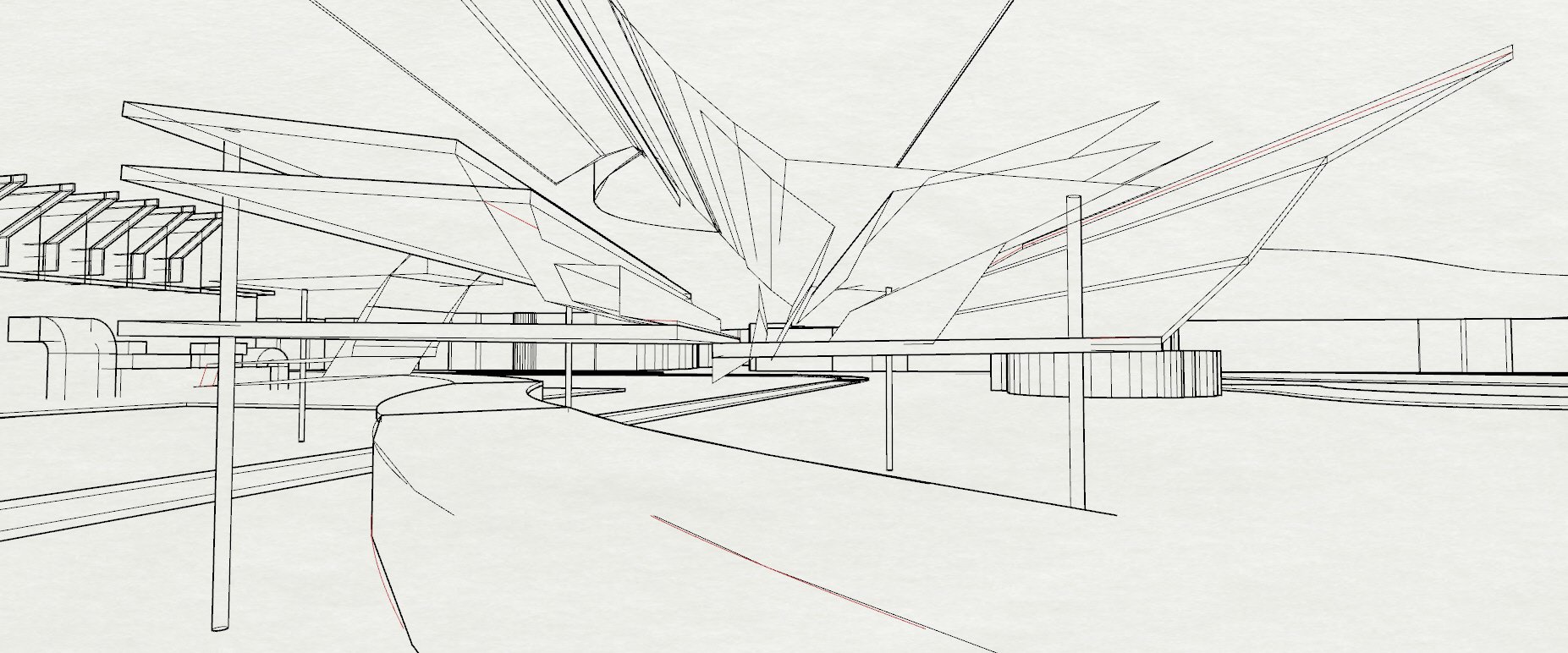60 to 5 in 3.5 | Reimagining the L.A. Commute
The following project was inspired by a road trip. It’s a proposed envision for a new museum to join the collective buildings that exist at the Los Angeles County Museum of Modern Art (LACMA). The concept was inspired by L.A.’s car culture, integrating the vehicle into the display and visual experience of art. The design embraces the future of autonomous technology, and offers the driver two simultaneous roles - viewer of art, and shaper of the art itself.
Los Angeles is a city of speeds - not only in the automotive sense, but in the rate at which various modalities of data and experiences are processed and displayed. Los Angeles vehicles spend, on average, 6.6 million extra hours on the road, usually commuting. With an iconic culture whose roots lie in motion picture film, cultural tolerance and instant gratification, 60 to 5 embraces rather than shuns the vehicle, and radicalizes its importance as a mediator between the visual world and how art is internalized. It reimagines the driver’s experience from a dreaded car-ride to a new way of understanding.

















TABLE(LESS) FOR TWO
Scrolling through old photos revealed a pattern of meals I prepared for two over the course of 1 year, while living in a tiny studio apartment, even by San Francisco standards (240 sq. ft. to be exact). These images make me smile, remembering the nights we ate dinner, crossed legged on the floor - as I did when I was a child at family celebrations. (The last one was taken when we moved to the suburbs . . .and bought a dinner table).
COLLECTIVE HOUSING IN SAN FRANCISCO'S SHARING ECONOMY
Clockwork collective is about cohabitation. It looks to explore, challenge, and mitigate San Francisco’s housing crisis by offering a radical proposal for the shared living environment. Utilizing nurses as its local constituency, the design uproots the expectations of private and shared space, inversing their relationship. Within this constituency, two unique schedules exist: day shift workers and night shift workers. Clockwork Collective provides a dwelling where the most intimate space, the bedroom, becomes the shared space between the two inhabitants, yet maintains anonymity of the individual. Clockwork then becomes about larger questions of identity, both in the private and public realm, and the agency of expressing this identity is found in the transition spaces between the bedroom and supporting spaces. The proposed design operates on the premise that “shared” opportunities can be had without ever interacting with the other. Through a mat typology, the residential dwellings support the needs of the individual's privacy, allowing for expression of identity while maintaining a contingent relationship with the other. The design allows for gradual transition spaces to and from the public city realm, a crucial requirement for nurses facing long hours and challenging work environments. Clockwork collective allows for individual anonymity and disengagement in what is typically the most engaging and intimate space. It re-imagines the space in which identity is constructed, both exploring the individual scale and collective realm.











